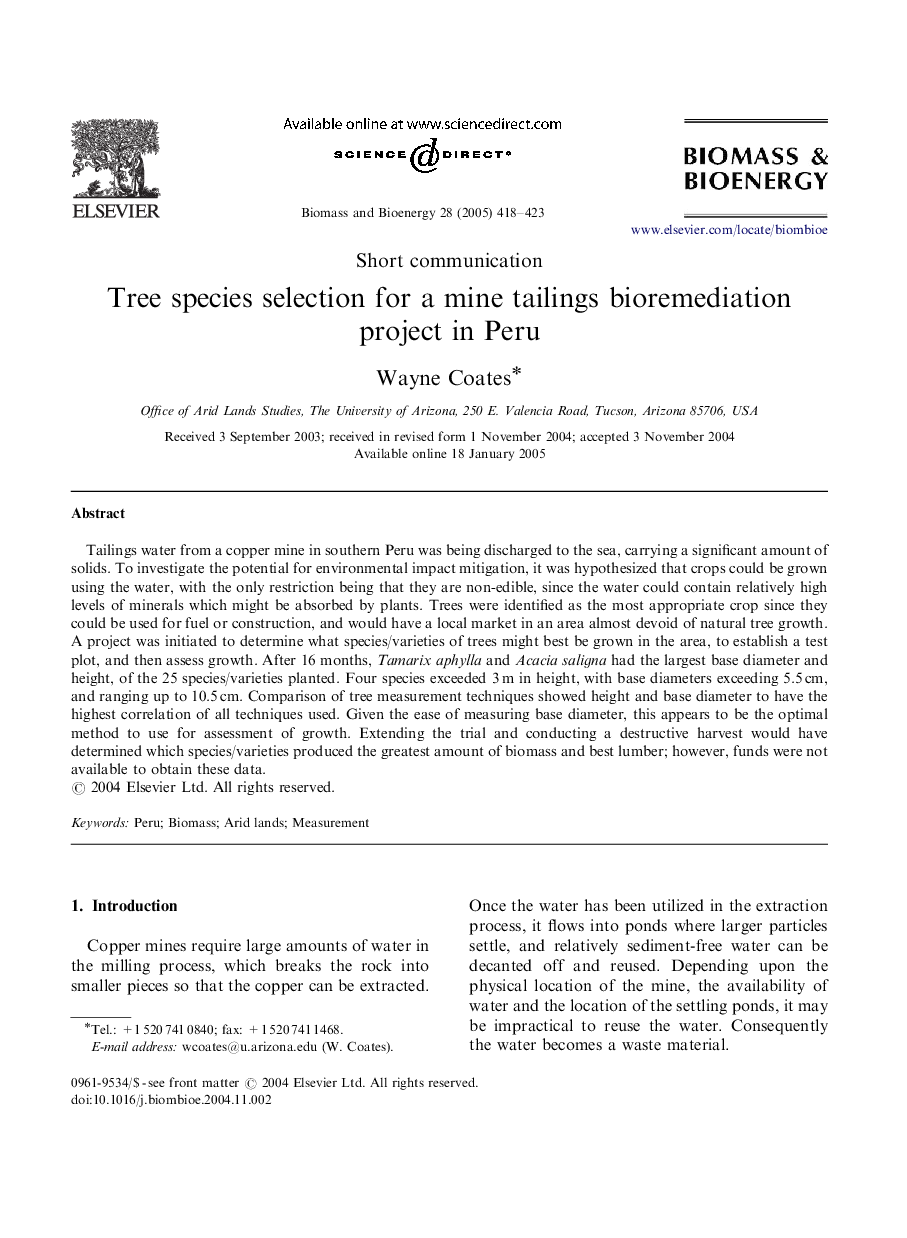| Article ID | Journal | Published Year | Pages | File Type |
|---|---|---|---|---|
| 10394087 | Biomass and Bioenergy | 2005 | 6 Pages |
Abstract
Tailings water from a copper mine in southern Peru was being discharged to the sea, carrying a significant amount of solids. To investigate the potential for environmental impact mitigation, it was hypothesized that crops could be grown using the water, with the only restriction being that they are non-edible, since the water could contain relatively high levels of minerals which might be absorbed by plants. Trees were identified as the most appropriate crop since they could be used for fuel or construction, and would have a local market in an area almost devoid of natural tree growth. A project was initiated to determine what species/varieties of trees might best be grown in the area, to establish a test plot, and then assess growth. After 16 months, Tamarix aphylla and Acacia saligna had the largest base diameter and height, of the 25 species/varieties planted. Four species exceeded 3Â m in height, with base diameters exceeding 5.5Â cm, and ranging up to 10.5Â cm. Comparison of tree measurement techniques showed height and base diameter to have the highest correlation of all techniques used. Given the ease of measuring base diameter, this appears to be the optimal method to use for assessment of growth. Extending the trial and conducting a destructive harvest would have determined which species/varieties produced the greatest amount of biomass and best lumber; however, funds were not available to obtain these data.
Keywords
Related Topics
Physical Sciences and Engineering
Chemical Engineering
Process Chemistry and Technology
Authors
Wayne Coates,
